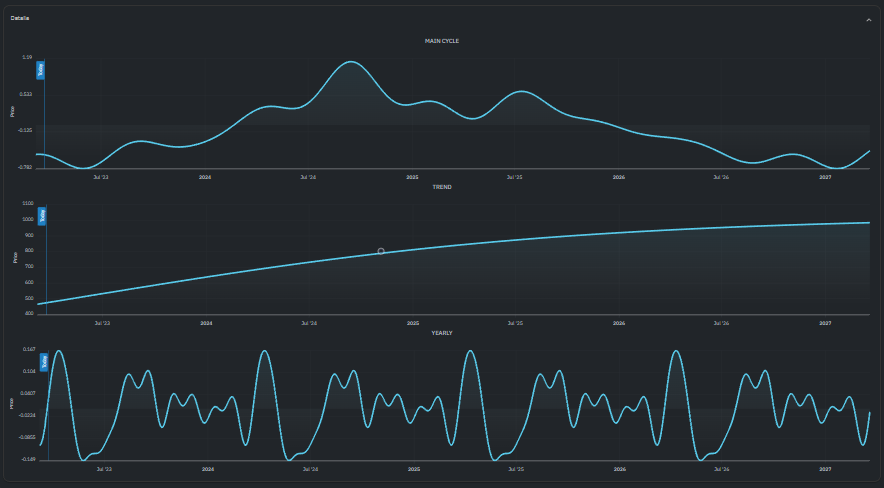Top 10 Tips For Evaluating Market Coverage Using Ai Stock Predicting Or Analyzing Trading Platforms
Market coverage plays an important aspect in evaluating an AI stock-predicting/analyzing trading platform which affects the access you have to a broad variety of financial and asset markets. Market coverage is essential because it allows you to diversify your portfolio, learn about global markets and to adapt various trading strategies. Here are 10 suggestions to help you analyze the market coverage provided by these platforms.
1. Evaluate Supported Asset Classes
Stocks: Make sure that the platform contains stocks from the top stock exchanges, which include NYSE, NASDAQ and LSE.
ETFs. Check that the platform has a wide selection of ETFs so you can get diversified exposure.
Options and futures: Verify whether the platform supports derivatives, such as futures, options and other instruments that leverage.
The commodities and forex. Check to see whether there are any forex pairings available, as well as precious metals, commodities for energy, and agricultural commodities.
Cryptocurrencies – Check to see whether your platform is compatible with major copyright like Bitcoin, Ethereum and altcoins.
2. Check the coverage of your area.
Global markets: The platform must include major global markets like North America and Europe, Asia-Pacific and emerging markets.
Regional focus Ensure that the platform has a focus on certain regions or markets which are in line with your interest in trading.
Local exchanges – Examine to see if there are local or regional exchanges which are relevant to your area and strategy.
3. Compare Real-Time vs. Delayed Data
Real-time Market Data: The system needs to offer real-time data on trading that allows for quick decision-making.
Delayed data – Find out if delayed data is available for free or is available at a reduced price. This may be sufficient to investors who want to invest for the long-term.
Data latency – Verify that the platform is able to reduce the delay of feeds that are real-time. This is crucial for high-frequency traders.
4. Evaluation of Historical Data
In depth of Historical Data Check that the platform provides extensive historical data that can be used for backtesting analysis, testing and analysis (e.g. 10or more years).
Granularity: Check if historical data include intraday, daily weekly, monthly and intraday level of granularity.
Corporate actions: Verify whether historical data reflects stock splits, dividends, and other corporate actions.
5. Review market depths and make an order for books
Level 2 data: Ensure that the platform has Level 2 data (order book depth) to facilitate price search and execution.
Review the bid-ask price ranges to make sure you are getting the most accurate price.
Volume data: Verify that the platform has comprehensive volume data to analyze market liquidity.
6. Review the coverage of Indices Sectors
Major indices – Make sure your platform works with major indices like S&P 500 and FTSE 100 to benchmark.
Sector-specific data : Find out if your platform is able to provide data specifically for certain industries (e.g. technology, healthcare and energy) which allows you to conduct specific analyses.
Customized indexes. Make sure that the platform is capable of creating and monitoring custom indices based on your requirements.
7. Evaluation of the integration with News and Sentiment data
News feeds: Ensure that the platform incorporates real-time news feeds from reputable sources (e.g., Bloomberg, Reuters) to track market-moving events.
Sentiment analysis: Find out if the platform includes sentiment analysis tools based on news media, social media, or other data sources.
Event-driven Strategies: Check if the platform can support strategies that are triggered by certain events (e.g. economic reports and earnings announcements).
8. Check for Multimarket Trading Capabilities
Cross-market trading : Ensure that your platform can handle trading on different markets, asset classes and exchanges through a single interface.
Conversion of currencies: Find out if the platform supports multi-currency as well as automated conversion of currencies to facilitate international trading.
Verify that you are in compliance with time zones.
9. Examine coverage of alternative data sources
Alternative data: Check whether the platform incorporates other sources of data (e.g., satellite imagery, internet traffic, credit card transactions) for unique insights.
ESG data. Verify whether the platform is stocked with socio-economic, environmental and governance data for socially responsible investing.
Macroeconomics data: For basic analysis, ensure that the platform contains macroeconomic indicators such as GDP (gross domestic product) inflation rates, GDP and interest rates.
Review customer feedback and reputation of the market
User reviews: Examine user feedback in order to assess the platform’s market coverage as well as its reliability and usability.
Find out the reputation of the platform in relation to its coverage or awards for industry.
Case studies: Look for reviews or case studies that demonstrate the platform’s effectiveness in specific areas or asset classes.
Bonus Tips
Trial period: Use a free trial or demo to evaluate the market coverage and data quality.
API access: Verify if the platform’s API permits access to market data in a programmatic manner for customised analysis.
Support for customers. Be sure the platform provides assistance for data or market related inquiries.
Utilizing these guidelines, it is possible to accurately assess the coverage of AI software for stock prediction and analyzing trading platforms. It is then possible to select a trading platform that offers you the markets and information you need to make successful trades. A broad market coverage will allow you to diversify and expand the possibilities of your portfolio. It also assists you adapt to changes in market conditions. Follow the most popular read more about ai trading platform for blog examples including free ai tool for stock market india, best artificial intelligence stocks, best stock analysis app, ai based trading platform, using ai to trade stocks, trading ai bot, ai stock trading app, trading with ai, ai stock trading app, ai trading bot and more.

Top 10 Tips To Evaluate The Potential And Flexibility Of Ai Stock Trading Platforms
To make sure the AI-driven stock trading and prediction platforms meet your expectations It is important to evaluate their trials and options before committing long-term. These are the top ten suggestions to think about these elements.
1. Enjoy an opportunity to try a free trial
Tip: Check if the platform provides a free trial period to test its capabilities and performance.
You can evaluate the platform for free.
2. The Trial Period and the Limitations
Check the length of the trial, and any restrictions.
What’s the reason? By understanding the limitations of the trial, you can determine whether the trial is an accurate assessment.
3. No-Credit-Card Trials
You can find free trials by searching for those that do not ask you to supply your credit card details.
This helps reduce the risk of unexpected costs and makes it easier to opt out.
4. Flexible Subscription Plans
TIP: Check to see if there are clear pricing tiers as well as Flexible subscription plans.
The reason: Flexible plans allow you to select the level of commitment that is most suitable to your budget and requirements.
5. Customizable Features
Find out whether you are able to customize options like warnings or levels of risk.
Why is this: Customization allows the platform to your trading objectives.
6. Simple cancellation
Tip: Assess how easy it is to cancel or downgrade a subscription.
The reason: You can end your plan at any time So you don’t have to be stuck with a plan which isn’t the right fit for you.
7. Money-Back Guarantee
TIP: Look for platforms with the guarantee of a money-back guarantee within a set time.
Why: You have an extra security net in case you aren’t happy with the platform.
8. Access to all features during Trial
Tip – Make sure that the trial version contains all the features that are essential and is not a restricted edition.
Check out the entire functionality before making a decision.
9. Support for Customer Service during Trial
You can contact the customer service during the trial period.
Why? A reliable customer service can help you solve problems and enhance your trial experience.
10. Feedback Mechanism Post-Trial Mechanism
Find out if your platform is soliciting feedback for improving services following the trial.
Why: A platform that values user feedback will be more likely to grow and meet user needs.
Bonus Tip Optional Scalability
Be sure the platform you choose to use can adapt to your changing needs in trading. It should offer higher-tiered options or features as your activities increase.
Before committing to any financial obligation, carefully evaluate these options for flexibility and trial to determine if AI stock prediction and trading platforms are the best fit for you. View the recommended investment ai for website info including ai stock prediction, ai investment advisor, best ai stock trading bot free, ai trading bot, stock analysis tool, ai trader, investing ai, ai investment platform, investment ai, ai trading platform and more.
